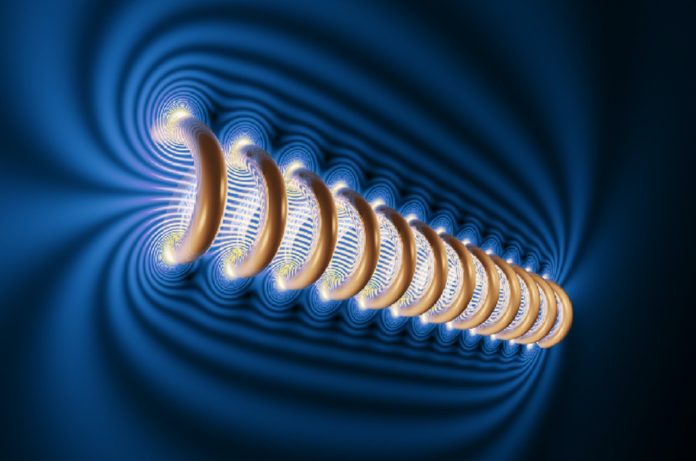Almost everything around us produces a magnetic field—from our electronic gadgets to our pulsating hearts—and we can utilize those fields to pick up data about all these systems.
Physicists at the Brown University have devised a new compact, ultra-sensitive magnetometer. This new device can aid in multiple applications, including detecting weak magnetic fields.
Scientists have uncovered a class of sensors that are ultra-sensitive, small, cheap to make, and don’t use much power.
The new device akes a cousin to the Hall effect—known as the anomalous Hall effect (AHE)— which emerges in ferromagnetic materials. While the Hall impact emerges because of the charge of electrons, the AHE emerges from electron spin, the tiny magnetic moment of every electron. The effect causes electrons with different spins to disperse in multiple ways, which offers to ascend to a small, however discernible voltage.
The device is composed of an ultra-thin ferromagnetic film made of cobalt, iron, and boron atoms. The spins of the electrons want to be aligned in the plane of the film, a property called in-plane anisotropy. After the film is treated in a high-temperature furnace and under a strong magnetic field, the spins of the electrons build up a tendency to be situated perpendicular to the cinema with what’s known as perpendicular anisotropy.
When these two anisotropies have equal strength, electron spins can quickly reorient themselves if the material comes into contact with an external magnetic field. That reorientation of electron spins is detectable through AHE voltage.
The device is 20 times more sensitive than conventional traditional Hall effect sensors. The key to its sensitivity is that it does not require a strong magnetic field to flip the spins in the film.
What’s more, Key to making the device work is the thickness of the cobalt-iron-boron film. A film that’s too thick requires stronger magnetic fields to reorient electron spins, which decreases sensitivity.
If the film is too thin, electron spins could reorient on their own, which would cause the sensor to fail. The researchers found that the sweet spot for thickness was 0.9 nanometers, a thickness of about four or five atoms.
Scientists noted, “The device could have widespread applications. One example that could be helpful to medical doctors is in magnetic immunoassay, a technique that uses magnetism to look for pathogens in fluid samples.”
“Because the device is very small, it is possible to put thousands or even millions of sensors on one chip. That chip could test for many different things at one time in a single sample. That would make testing easier and less expensive.”
Journal Reference:
- Yiou Zhang eta l., Noise characterization of ultrasensitive anomalous Hall effect sensors based on Co40Fe40B20 thin films with compensated in-plane and perpendicular magnetic anisotropies. DOI: 10.1063/5.0008949
